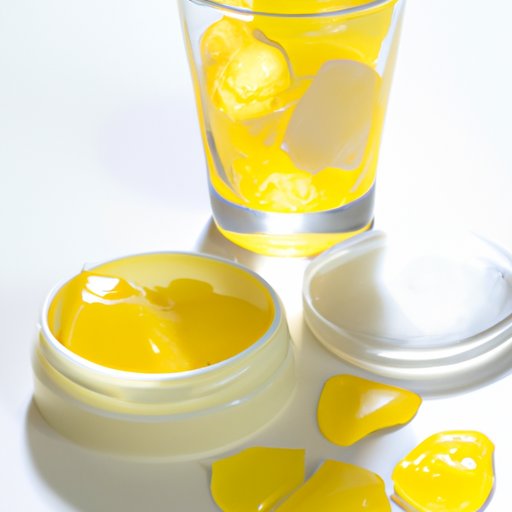
Introduction
Have you ever woken up with an unsightly and painful bruise and wondered what you can do to speed up the healing process? Bruises are a common occurrence caused by trauma, such as an injury or bump on the skin. The discoloration and pain associated with a bruise can be uncomfortable and sometimes even debilitating. However, there are steps you can take to reduce swelling, prevent further damage, and promote faster healing.
Ice it Down
Applying ice to a bruised area can help numb the pain and reduce swelling. Wrap ice in a towel and hold it against the affected area for 15-20 minutes at a time, several times a day. Take breaks in between to avoid skin damage. Keep ice on until the swelling goes down, usually for the first 24-48 hours after the injury.
Apply Pressure
Compression helps prevent further damage and reduces pain and inflammation. Use an elastic bandage, wrapped snugly but not tight, around the affected area. Keep it on for at least 20 minutes at a time, several times a day. Be cautious with conditions such as deep vein thrombosis and arterial disease, where compression can be harmful.
Elevate the Area
Keeping the bruised area elevated can reduce blood flow and swelling, leading to faster healing. Raise the affected area above the level of the heart, using pillows for legs and arms, or simply resting the injury on a table. Avoid elevating areas where it could promote swelling, such as around the eyes or cheeks.
Take Over-the-Counter Pain Relief
Over-the-counter painkillers such as acetaminophen or ibuprofen can help alleviate the discomfort associated with a bruise. Follow label instructions and avoid overdosing, as some painkillers can be harmful to the liver and stomach. Seek medical attention if necessary.
Apply Arnica Cream
Arnica cream is a topical treatment that can decrease swelling and improve healing. Apply a thin layer of arnica gel or cream to the affected area three times a day. For people with allergies or sensitive skin, be cautious as it could cause redness or itching.
Use Heat Therapy
Applying heat to a bruised area can increase blood flow and promote healing. Use a warm compress or a heating pad on low to medium heat, for no longer than 10 to 15 minutes at a time, several times a day. Avoid heat therapy for the first 24 hours after the injury, and with conditions such as nerve damage or skin infection.
Try Natural Remedies
Several natural remedies have been suggested to help reduce inflammation and bruising. Apple cider vinegar, rich in acetic acid and antioxidants, can be applied topically or consumed orally. Pineapple, rich in bromelain, has been found to reduce swelling and inflammation. However, these remedies are not always scientifically proven. Be cautious and avoid excessive use, and seek medical attention if necessary.
Conclusion
Overall, bruises can be uncomfortable and unsightly, but there are steps you can take to speed up the healing process. Try one or several remedies based on your own preference and situation, and be cautious with possible side effects or conditions that may require medical attention. Seek medical attention if your bruise is severe, painful, or does not go away. With patience and care, your skin will heal and your pain will subside.




